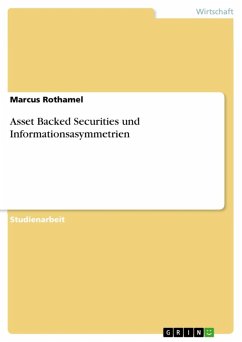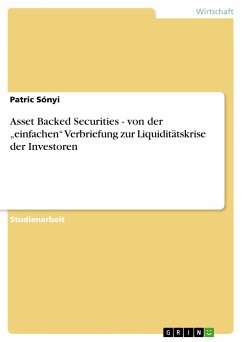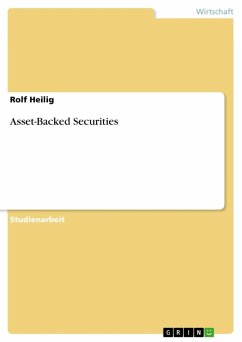Seminar paper from the year 2007 in the subject Business economics - Investment and Finance, grade: 1,5, Berlin School of Economics, course: Global Finance, language: English, abstract: Almost all companies do have an effective portfolio management nowa-days. Nevertheless, it is not unusual for companies to have very high values in receivables. Especially for companies with a turnover of more than 100 million EUR, the receivables grow to a value of 10 million EUR or more. This capital is usually unavailable for the company and may become available using Asset Securitisation to refinance the receivables. Nowadays, Securization is exercised in many branches, but the focus of this paper should be on ABS-projects with banks. The influence of Basel II on the behaviour of credit institutions further reinforces the importance of Asset Securitisation as a tool for companies to improve capital costs and the balance sheet rations. This again has implications for the rating of enterprises. Due to the growing interest in Asset Securitisation, a lot of research has been done by the European financial institutions. ABS might be designed in many different variants. To consider all of them, a realistic volume of this work would be exceeded. Target of this paper is to give an overview about the function of ABS and the affiliated possibilities and chances to use them in practice. In the first part of this paper, the question of definition and of the basic structure of Asset Backed Securities will be examined. Furthermore, the requirements for an Asset Securitisation in respect to the portfolio of as-sets will be explained. The second part is concerned with a detailed outline of the two groups of ABS, namely True Sale and Synthetic Sale and the allied key role of the KfW. Thereby, the questions of adding value and benefits for the differ-ent participants within structured finance transactions are examined. In the third part, general facts and figures as well as the advantages and disadvantages from the bank’s perspective are regarded. Finally, our conclusion informes about the current situation of the Euro-pean market for securization and ABS and its propable development as a modern financing insrument, especially for banks, in the future.








